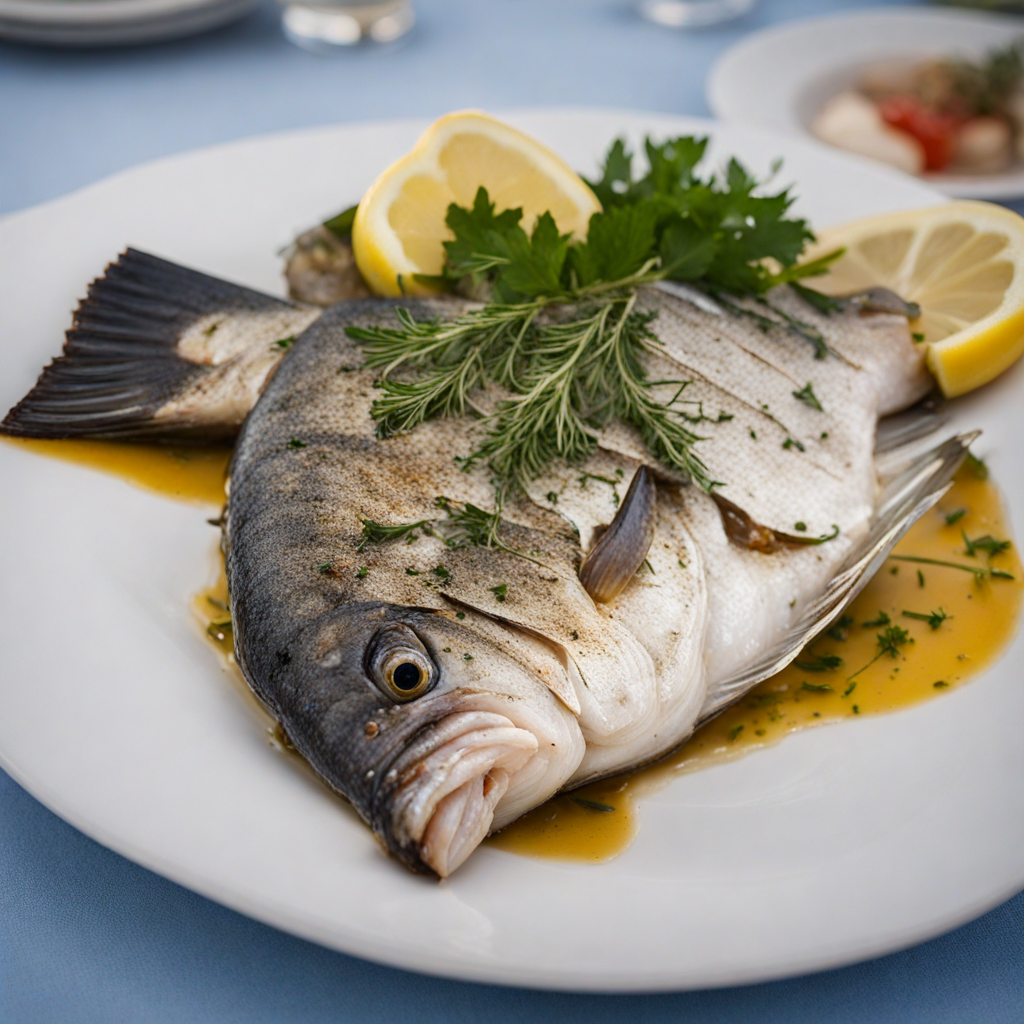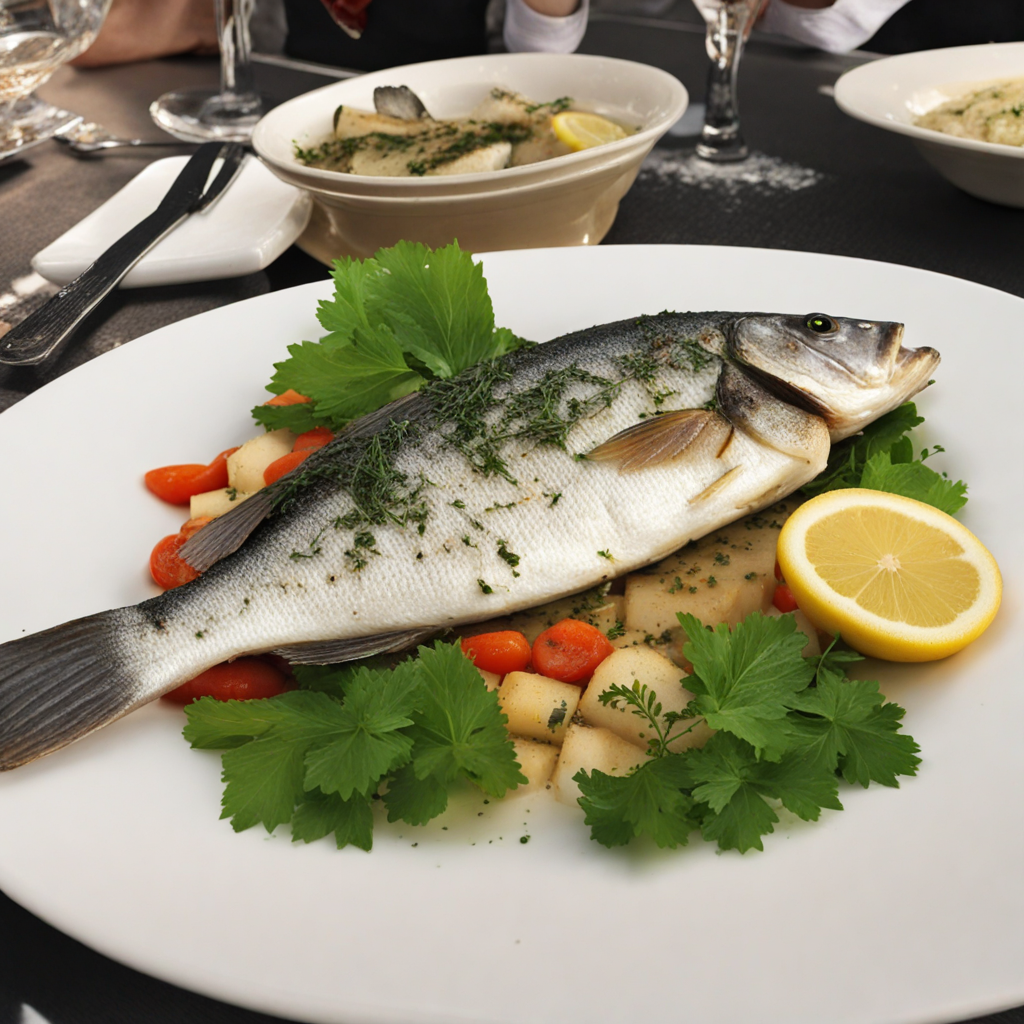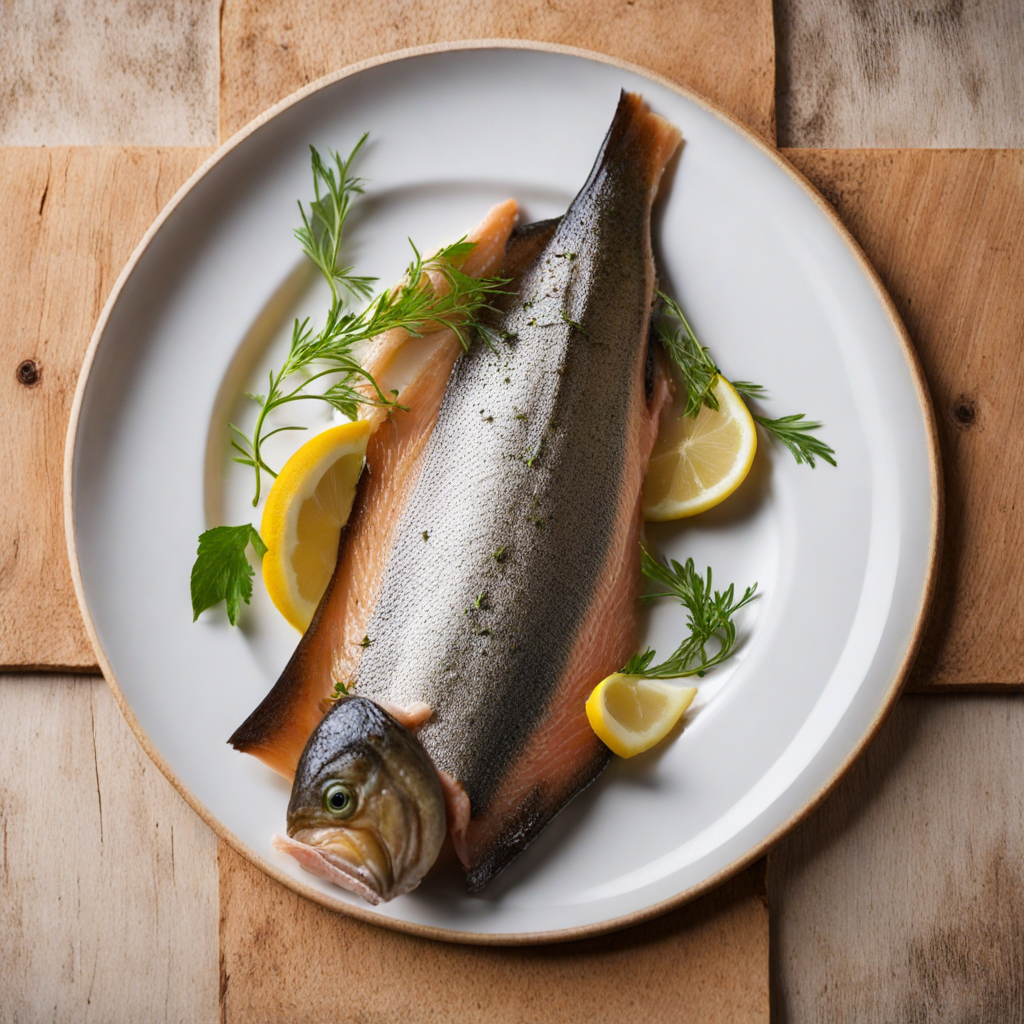Sea Bass from Piran
Sea Bass from Piran is a culinary gem that showcases the pristine waters of Slovenia's Adriatic coast. Known for its delicate, flaky texture and mild flavor, this fish is typically caught fresh by local fishermen off the scenic coastline near the coastal town of Piran. The clear waters and nutrient-rich environment contribute to the exceptional quality of the Sea Bass, making it a sought-after delicacy among seafood lovers. The fish is often prepared simply to highlight its natural flavors, usually grilled or baked, and is complemented with a drizzle of high-quality olive oil and a squeeze of fresh lemon juice. One of the most popular ways to experience Sea Bass from Piran is through the traditional Slovenian dish known as "brancin na žaru," which translates to grilled sea bass. The fish is seasoned with local herbs like rosemary and thyme, enhancing its fresh taste while allowing the natural sweetness of the sea bass to shine through. Served alongside seasonal vegetables or a light salad, this dish embodies the essence of Mediterranean cuisine—fresh, vibrant, and full of flavor. The pairing of the fish with local white wines, such as Malvasia or Sauvignon Blanc, creates a delightful balance that elevates the dining experience. In addition to its taste, Sea Bass from Piran carries a cultural significance for the people of Slovenia, as it represents a connection to their maritime heritage. The fishing traditions passed down through generations ensure that the methods of catching and preparing this fish remain sustainable and respectful of the environment. Enjoying Sea Bass from Piran is not just a meal; it is an invitation to savor the rich history and flavors of Slovenia's coastal landscape, making it a perfect choice for anyone looking to explore new culinary horizons.
How It Became This Dish
The History and Cultural Significance of Piranski Brancin: A Culinary Gem of Slovenia Nestled along the picturesque Adriatic coast, the small town of Piran in Slovenia boasts a rich maritime culture that has significantly influenced its local cuisine. Central to this culinary identity is a prized delicacy known as Piranski brancin, or Piran sea bass. This fish not only represents the region's bountiful marine resources but also encapsulates the historical, cultural, and gastronomic evolution of the area. #### Origins of Piranski Brancin The origins of Piranski brancin can be traced back to the ancient maritime practices of the Mediterranean. Piran, with its strategic position along the Adriatic Sea, has been a focal point of fishing since Roman times. The Romans, who established trading routes along the coast, recognized the area’s potential for fishing, and Piran became a hub for fish trade. The sea bass, known scientifically as *Dicentrarchus labrax*, thrived in the rich waters of the Adriatic, making it a staple for local fishermen. In the centuries that followed, the fishing culture in Piran evolved as the town passed through various hands—by the Venetians, Habsburgs, and even Napoleon’s rule. Each of these powers brought their culinary influences, yet the essence of local fishing remained intact. The fishing techniques and recipes were passed down through generations, making the preparation of Piranski brancin a cherished tradition. #### Cultural Significance Piranski brancin is more than just a dish; it embodies the spirit of Piran and its people. The sea bass has significant cultural relevance, often featuring in local celebrations, festivals, and family gatherings. In Piran, fish markets are vibrant centers of communal life, where locals gather not only to buy fresh catches but also to share stories and recipes. This communal aspect of fishing and cooking helps to foster a sense of belonging and pride among the inhabitants of Piran. The preparation of Piranski brancin is often steeped in tradition. It is typically grilled or baked with simple ingredients that enhance its natural flavors—olive oil, garlic, rosemary, and lemon are common accompaniments. The simplicity of the dish reflects the Mediterranean philosophy of celebrating fresh, locally sourced ingredients. Moreover, the dish is often paired with local wines, such as those from the nearby Brda region, creating a harmonious culinary experience that showcases the region’s agricultural bounty. #### Development Over Time As Slovenia emerged from the shadows of its historical rulers in the 20th century, the culinary landscape underwent a transformation. The emergence of a national identity in the wake of independence in 1991 led to a renewed interest in traditional Slovenian dishes, including Piranski brancin. Chefs and home cooks alike began to explore and revive traditional recipes, emphasizing the importance of local ingredients and sustainable fishing practices. In recent years, the rise of gastronomy tourism has further elevated the status of Piranski brancin. Food enthusiasts and travelers are drawn to Piran not only for its stunning coastal beauty but also for its culinary heritage. Restaurants began to feature Piranski brancin prominently on their menus, often utilizing innovative cooking techniques while honoring the traditional methods of preparation. The dish has thus become a culinary ambassador for Piran, showcasing the town's unique blend of history, culture, and gastronomy to a broader audience. Moreover, the emphasis on sustainability has led to increased awareness about responsible fishing practices. Many local fishermen and chefs advocate for sustainable methods to ensure that the waters around Piran remain rich in biodiversity for future generations. This commitment to sustainability not only preserves the local ecosystem but also enhances the quality of Piranski brancin, as fish caught sustainably are often fresher and more flavorful. #### Contemporary Interpretations In contemporary Slovenia, Piranski brancin has found its way into the kitchens of both traditional and modern restaurants. While the classic preparation remains popular, chefs are experimenting with flavors and techniques that reflect global influences. For instance, some chefs incorporate Asian spices or Mediterranean herbs, creating fusion dishes that retain the essence of Piranski brancin while appealing to a modern palate. Moreover, the dish is often featured in culinary festivals that celebrate regional cuisine. Events such as the Piran Seafood Festival highlight local seafood, including Piranski brancin, and offer cooking demonstrations, tastings, and competitions. These festivals not only promote the dish but also strengthen community ties and foster a sense of pride in local culinary traditions. #### A Symbol of Resilience Piranski brancin represents not only the rich maritime heritage of Piran but also the resilience and adaptability of its people. Through centuries of change, from the Roman Empire to the modern Slovenian state, the dish has remained a constant, reminding locals of their roots while allowing for innovation. As Slovenia continues to develop its culinary identity, Piranski brancin stands as a testament to the enduring connection between food, culture, and community. In conclusion, the history of Piranski brancin is a captivating narrative that intertwines the natural bounty of the Adriatic Sea with the vibrant cultural tapestry of Piran. From its ancient origins as a staple of local fishermen to its contemporary status as a culinary icon, Piranski brancin is more than just a fish; it is a cultural emblem that tells the story of a community shaped by its environment and heritage. As Slovenia embraces its gastronomic future, Piranski brancin will undoubtedly continue to play a pivotal role, inviting food lovers from around the world to savor a slice of Piran's history.
You may like
Discover local flavors from Slovenia







